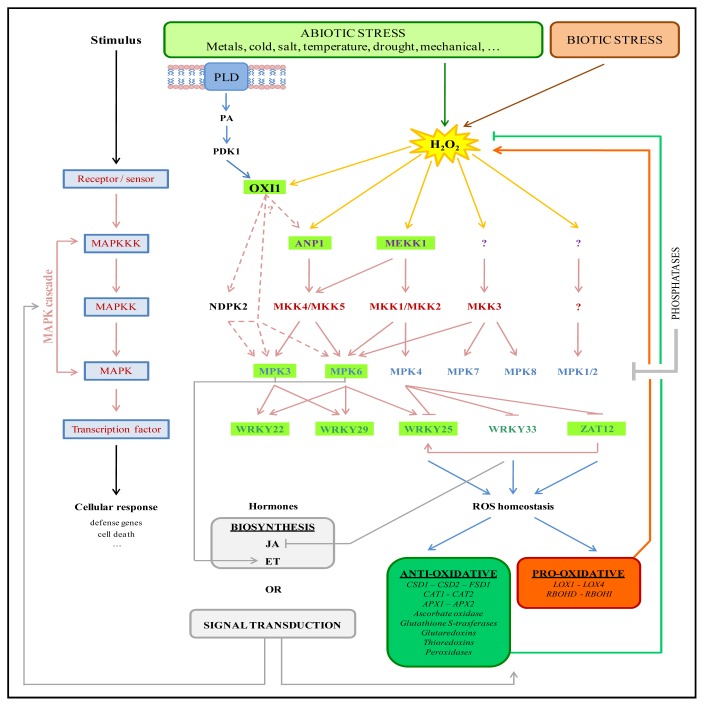Figure 1.
Overview of the different MAPK cascades known to function in stress responses as well as their regulation and possible downstream outcomes (signaling components involved in metal stress are highlighted in green). Production of ROS is a common phenomenon between different biotic and abiotic stresses. In particular H2O2 can act as an intra- and intercellular signaling molecule activating MAPK cascades. Via lipid signaling or phosphorylation of OXI1, ROS production can be linked to MAPK activation. MAPK signaling pathways induce gene expression of stress-responsive genes through the activation of transcription factors. On one hand, MAPK cascades influence the cellular redox status by activating gene expression of antioxidative or pro-oxidative enzymes. In this way, MAPK signaling can attenuate or amplify the initial ROS signal. On the other hand, MAPKs interfere with hormone signaling and biosynthesis leading to activation of downstream stress responses. Inactivation of MAPK pathways occurs through phosphatases, which dephosphorylate MAPKs, resulting in the disruption of the MAPK signal and are therefore important in the regulation of downstream responses.

